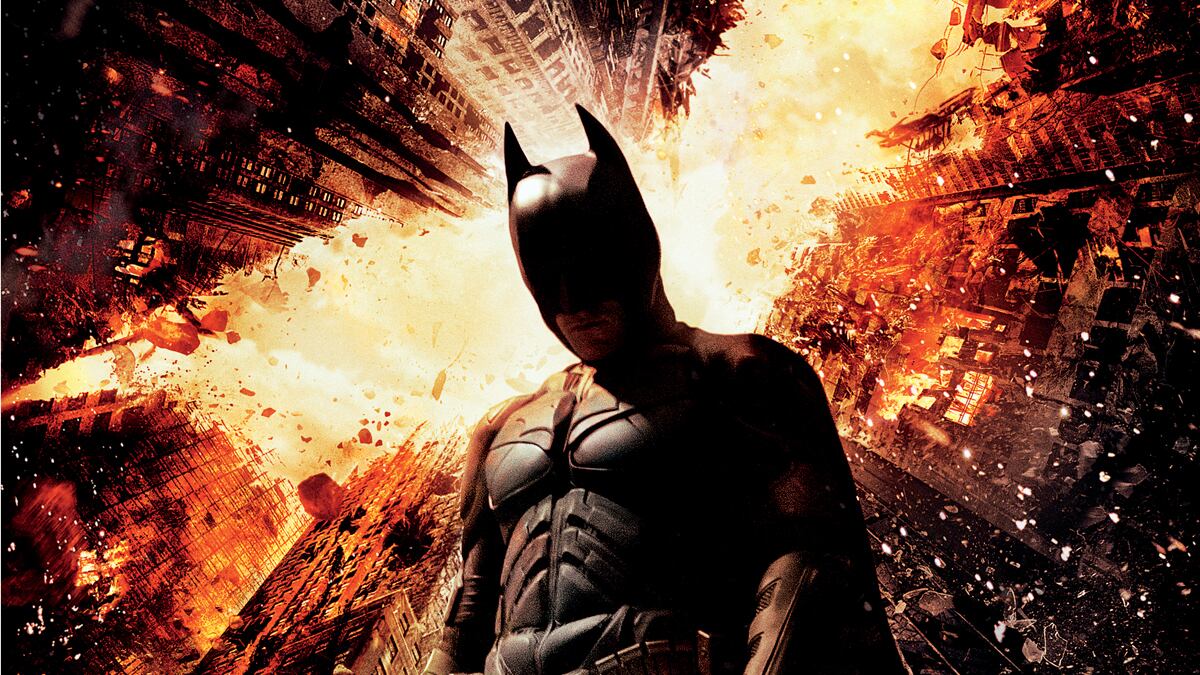Even the most wacked-out nutjob has to learn how to be a lunatic, and always has. In the Middle Ages, he would have known to grow a beard, head to a cave, and play the hermit. During the Industrial Revolution, he would have known to say that all those new gears and levers were messing with his mind.

And now, in the early-21st century, he learns that being crazy involves dyeing your hair Joker-red and committing mass murder. In the debate around last weekend’s shootings in Aurora, which took place at the premiere of the new Batman film, it’s easy to feel torn between the notion that violent movies breed actual violence, and the idea that James Holmes, the 24-year-old man police have accused of the crime, is just a madman whose actions speak only for themselves. But there’s a more credible position that includes both views: that Holmes went mad, and that the art and culture around him shaped the kind of lunatic he turned out to be. (Forget legal or medical definitions of insanity: anyone who does horrible damage to dozens of strangers, for no credible reason, is, in common parlance, nuts.) Movies don’t make us go insanely violent, but if you’re going to lose control anyway, they provide a model for how to go about it—a model for just how bad and mad today’s crazy person is supposed to be.
“In the United States, people hallucinate about the CIA, and in other places, about the gods…There’s a strong cultural shaping to aberrant behavior,” says Laurence Kirmayer, the editor of a journal called Transcultural Psychiatry, which is also the name of his scientific discipline. Reached at his office at McGill University, where his field got its start, Kirmayer tells me about the “amok” madmen, specific to 19th-century Malaysia, who, possessed by a spirit, reacted to a blow to their ego by going on a homicidal rampage, in an illness that mostly disappeared along with the traditional culture that bred it.
And he tells me about how 19th-century Europe, with its new mobility, saw a surge in lunatic travelers who would walk hundreds of miles then lose all memory of having taken the trip—a condition that’s now rare. People go crazy all around the globe, often according to certain general patterns: They suffer from rigid ideas they can’t be talked out of. They hear voices or feel controlled from outside. They believe they’re being conspired against. But what those ideas are, what the voices say, and who’s doing the controlling is “going to be fed by the specific culture around you,” says Kirmayer.
A sick person’s inchoate feelings of resentment and persecution and alienation get some kind of coherence when they fit into a ready-made storyline—like the violent story of heroes and antiheroes told in the Batman movies. It would hardly be surprising for an underdog whose mind was already in some kind of chaotic state to have a fascination with the Joker, “a cultural antihero who brings chaos,” Kirmayer says. (Holmes apparently told police that’s who he was.) And if you have a sense that you might be going mad, there could hardly be a more compelling model for how to do it than the Joker, whom Heath Ledger so convincingly portrayed as the ultimate homicidal maniac. To have the effect I’m arguing for, Ledger’s Joker doesn’t have to be an accurate depiction of real mental illness. (In fact, the mentally ill are rarely more violent than anyone else.) The Joker just has to come off as credibly, impressively, archetypally mad—as the latest role model for all other vicious madmen.
There’s new evidence for how movies and madness can interact. Ian Gold, a philosopher at McGill, and his brother, Joel, a psychiatrist at New York University, have just published a scientific paper that presents what’s being called the “Truman Show delusion.” It describes how some psychiatric patients have started to claim that every moment in their lives is being secretly taped, then broadcast to the outside world—just, some of them say, as happened to Truman Burbank, the character played by Jim Carey in the 1999 film. The Golds aren’t claiming that the movie caused the mental illness in the patients they’re discussing, any more than I’m claiming that the Batman franchise made Holmes become violent. But once someone’s mind starts to go, the culture around him or her “shapes the manifestations,” as Ian Gold told me—it gets patients to think of their troubles in terms of Truman’s, or to act out by raising cain in an extravagant, Joker-like way.
Gold says we know that our social environment can help trigger mental illness in the first place. The simple fact of being raised in a city, for instance, increases your chances of going psychotic. The details of a sufferer’s symptoms also will be shaped by the world that he’s in: “Something about the local culture makes some delusions more likely than others,” says Gold, citing what’s known as the “pathoplasticity” of mental disorders.
The philosopher Ian Hacking, who did research on the 19th-century’s amnesiac travelers, talks in terms of “an ecological niche for certain kinds of mental illness.” You see a spate of mad trips at just that moment in European history when the culture at large is obsessed with vagabonds on its roads and with Jews fleeing pogroms—but also with the new, desirable travels of cross-country cycling clubs. Today, we may be seeing a surge in crazy mass murders (the columnist David Brooks has made a case for the increase) because we’ve made violent mass murder a major cultural theme—thanks partly to movies like Batman, which seem to be getting more and more violent, and madder and madder, with each iteration.
Kirmayer talks about a “habituation curve” we’ve climbed onto, and how it is forcing movies to become ever more chaotic and violent, to feed us the same adrenaline rush. My wife, an artist who never watches action movies, reacted with utter shock and misery at the absurdly violent scenes in the latest Batman film, while I could just about tolerate them.
But as I left the theater, which was being guarded by two cops, in case someone else decided to follow the Aurora script for how to go mad, I did have a creeping feeling that its violence had done me some kind of vague psychic harm. The little corners of irrationality that all of us have, the uncontrolled moments when we daydream and space out, seemed full of imagery that wasn’t good for me and might be worse for someone else—the way you might feel a little queasy after eating a bad oyster that could do real damage to someone with a weak immune system.
I’m not suggesting we should censor Hollywood. But the industry’s producers and directors, and we consumers of their goods, could decide to do without the kinds of art that may have helped Holmes go madder than he needed to, and that maybe keep the rest of us a tiny bit off-kilter. This is something we collectively have utter control over: we can have a different culture just by making it so, and change ourselves and our kids in the process. Holmes could have felt the urge to punch out a few strangers on a street corner, instead of casting himself as a supervillain.






